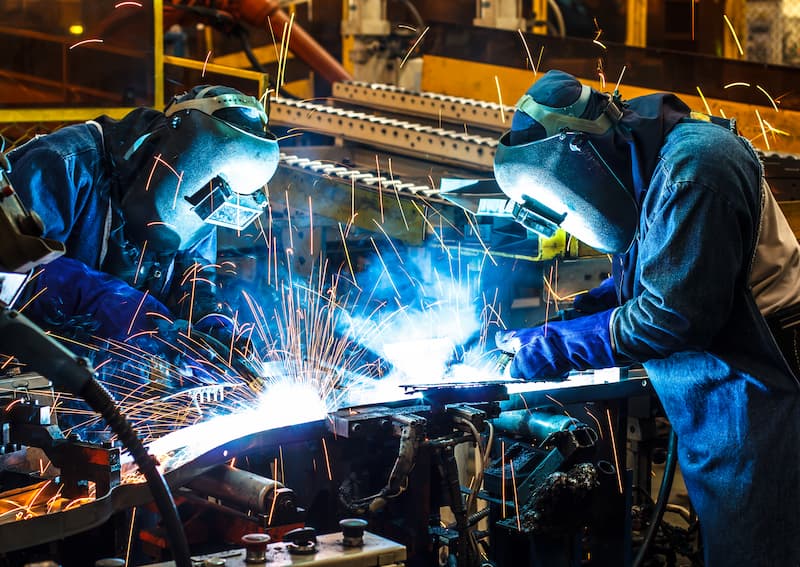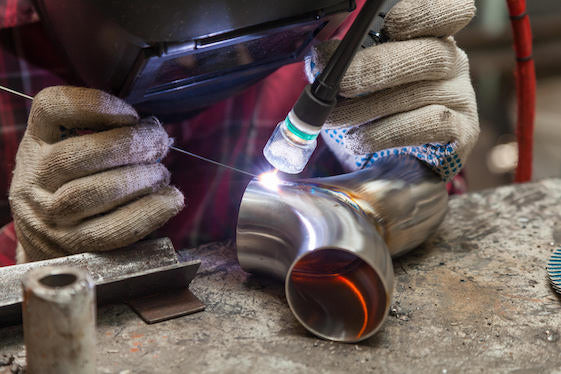Montana Mobile Welding and Repair Welding shares insight on addressing heat distortion effectively
Usual Welding Repair Service Issues and Just How to Address Them Properly
Welding repair services often run into a series of problems that can jeopardize the honesty of the end product. Common issues include poor penetration, porosity, and imbalance, amongst others. Each defect presents distinct obstacles that need details strategies for resolution. Understanding these concerns is necessary for welders intending to enhance their abilities and outcomes. This discussion will certainly check out these typical welding fixing concerns and reliable approaches to resolve them.
Poor Penetration
Inadequate infiltration happens when the weld metal falls short to fully fuse with the base product, causing weak joints and prospective structural failures. This concern often originates from inadequate warmth input, incorrect electrode angle, or inappropriate welding rate. Welders might experience inadequate infiltration because of a miscalculation of the essential criteria for a particular material density or type. Furthermore, contamination on the base material's surface area can hinder reliable bonding, intensifying the trouble. To resolve insufficient infiltration, welders should assure proper settings on their equipment and keep a tidy job surface area. Routine evaluation of welds is advised to identify any kind of deficiencies early, enabling timely improvements and the avoidance of jeopardized architectural honesty in welded settings up.
Porosity
Porosity is an usual flaw in welded joints that materializes as tiny gas bubbles trapped within the weld metal. This problem can jeopardize the honesty of the weld, bring about lowered strength and possible failure under tension. Welding. Porosity generally arises from contamination, moisture, or improper welding strategies, which permit gases to escape right into the liquified weld swimming pool. To attend to porosity, welders need to guarantee proper surface prep work, preserve a clean functioning environment, and utilize appropriate welding specifications. In addition, choosing the right filler product and protecting gas can mitigate gas entrapment. Normal inspection and screening of welds can help recognize porosity early, ensuring timely rehabilitative activities are taken, therefore maintaining the top quality and reliability of the welded framework
Imbalance
Misalignment in welding can occur from different variables, including improper arrangement and thermal development. Recognizing the origin is important for efficient resolution. Several modification techniques are available to realign parts and guarantee structural honesty.
Reasons of Misalignment
Welding misalignment commonly stems from a selection of underlying issues that can compromise structural honesty. One main reason is incorrect fit-up of parts prior to welding, which can cause spaces and uneven surfaces. Variants in thermal development throughout the welding procedure can additionally cause distortion, particularly if the products being signed up with have various coefficients of growth. In addition, inadequate fixturing and securing may fail to hold elements safely in position, causing movement throughout welding. Improperly maintained equipment, including welding makers and tools, might introduce inconsistencies in the weld bead, further adding to imbalance. Lastly, driver error, originating from inadequate training or experience, can additionally play a significant duty in developing misaligned welds.
Modification Techniques Readily Available
Attending to misalignment effectively calls for a mix of rehabilitative techniques customized to the details issues available. One typical method is using jigs or fixtures to hold components in the proper setting throughout welding, ensuring constant positioning. In addition, preheating the products can help in reducing distortion and boost fit-up. For considerable imbalance, mechanical realignment strategies, such as utilizing hydraulic jacks or clamps, can be utilized to deal with the setting before welding. Post-weld warm treatment may also be needed to ease tensions created by imbalance. Ultimately, careful inspection and change during the configuration stage can avoid misalignment issues from becoming substantial issues, advertising a smoother welding process and boosting total structural stability.
Distortion
Distortion is an usual challenge in welding that can occur from different factors, including uneven heating & cooling. Recognizing the root causes of distortion is crucial for applying reliable prevention methods. Resolving this issue not just boosts architectural integrity however also improves the total top quality of the weld.
Root causes of Distortion
When based on the extreme warm of welding, materials frequently go through adjustments that can lead to distortion. This phenomenon mainly develops from thermal growth and contraction throughout the welding process. As the weld area heats up, the product increases; upon cooling, it gets, which can develop inner stress and anxieties. Furthermore, irregular heating across a work surface can worsen these anxieties, leading to bending or flexing. The type of product also plays a significant duty; metals with differing thermal conductivity and coefficients of expansion might react differently, bring about uncertain distortions. Inadequate joint style and insufficient fixturing can add to misalignment during welding, enhancing the possibility of distortion. Understanding these reasons is crucial for reliable welding repair work and prevention strategies.
Avoidance Techniques
Efficient avoidance strategies for distortion throughout welding focus on regulating warmth input and ensuring correct joint design. Maintaining a regular heat input helps to minimize thermal expansion and tightening, which can bring about distortion. Utilizing strategies such as pre-heating the workpiece can additionally reduce the temperature level slope, promoting uniform home heating. Additionally, selecting suitable joint layouts, such as T-joints or lap joints, can enhance security and minimize stress and anxiety focus. Executing proper fixturing to protect the work surfaces in position additionally help in maintaining alignment throughout the welding process. Ultimately, staggered welding series can disperse heat a lot more uniformly, stopping local distortion. By applying these methods, read this welders can greatly reduce the chance of distortion and improve the overall quality of their welds.
Splitting
Cracking is a common issue encountered in welding repair work, often resulting from various variables such as incorrect air conditioning prices, material selection, or inadequate joint preparation. The occurrence of splits can substantially jeopardize the honesty of the weld, leading to potential failures during operation. To resolve this concern, welders need to initially examine the source, making sure that materials work and suitably selected for the particular application. In addition, regulating the air conditioning price during the welding procedure is important; quick air conditioning can cause tension and result in splitting. Correct joint design and preparation also contribute to minimizing the threat. Executing these methods can boost weld high quality and durability, inevitably lowering the likelihood of cracking in ended up weldments.

Insufficient Combination
A considerable problem in welding repair work is insufficient blend, which takes place when the weld steel does not adequately bond with the base product or previous weld passes - Montana Mobile Welding and Repair. This issue can result in weaknesses in the joint, potentially view jeopardizing the stability of the bonded structure. Variables adding to incomplete fusion include insufficient warm input, inappropriate welding technique, and contamination of the surface areas being signed up with. To address this problem properly, welders must ensure appropriate pre-weld cleaning and surface prep work, along with change their welding parameters to attain sufficient infiltration and blend. Regular evaluation throughout the welding process can also aid determine incomplete blend early, enabling for prompt corrective steps to boost the general high quality of the weld
Overheating
While welding repair work can enhance structural stability, overheating provides a substantial difficulty that can cause material degradation. Too much heat throughout welding can modify the mechanical homes of metals, resulting in lowered strength, raised brittleness, and warping. This sensation is especially important in high-stress applications where architectural reliability is extremely important. Determining getting too hot can involve aesthetic evaluations for discoloration or distortion, along with keeping an eye on temperature level throughout the welding procedure. To reduce the dangers connected with getting too hot, welders need to explanation use ideal strategies, such as controlling heat input, changing travel speed, and utilizing appropriate filler products. In addition, applying pre- and post-weld warm therapies can help restore product homes and improve the total quality of the repair, guaranteeing lasting efficiency and safety and security.
Frequently Asked Concerns
What Are the Usual Indications of a Welding Defect?

Exactly How Can I Examine My Welds for Quality?
To check welds for quality, one can make use of aesthetic assessments, ultrasonic testing, and radiographic techniques. Each technique guarantees architectural stability, determines problems, and confirms adherence to specified standards, eventually enhancing the reliability of the welded joints.
What Safety and security Safety Measures Should I Take While Welding?
When welding, one need to focus on safety by wearing suitable individual protective equipment, making certain correct ventilation, securing flammable materials away, keeping a tidy work area, and recognizing surroundings to stop injuries and crashes.
Can I Repair a Weld Without Remodeling the Entire Joint?
Repairing a weld without redoing the entire joint is possible, relying on the damage (Belgrade Fabrication). Methods such as grinding, including filler material, or making use of a welding procedure can efficiently resolve details defects while maintaining the surrounding structure
What Devices Are Important for Reliable Welding Repair Works?
Important devices for reliable welding repair services include a welding machine, wire brush, grinder, protective gear, clamps, and filler products. Each device plays an essential function in making sure high quality and safety and security throughout the fixing procedure. Porosity typically arises from contamination, dampness, or inappropriate welding strategies, which enable gases to escape into the liquified weld swimming pool. Improperly kept devices, including welding devices and devices, might introduce disparities in the weld grain, more contributing to misalignment. When subjected to the extreme heat of welding, materials often go through modifications that can lead to distortion. Splitting is a common concern run into in welding repair services, often resulting from various factors such as inappropriate cooling rates, material selection, or insufficient joint preparation. A considerable issue in welding repair work is incomplete fusion, which takes place when the weld metal does not appropriately bond with the base product or previous weld passes.